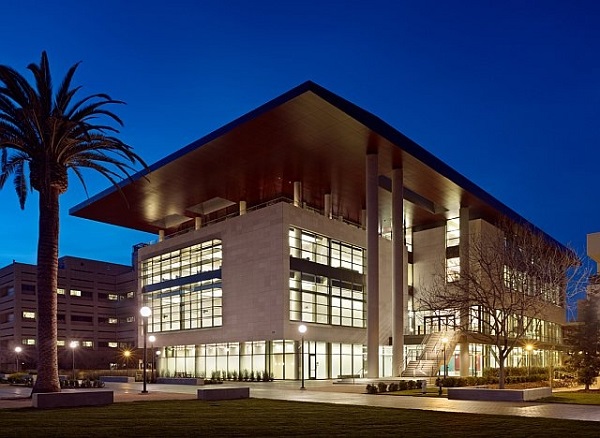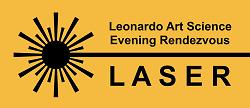The LASERs are a national program of evening gatherings that bring artists and scientists together for informal presentations and conversation with an audience. See the program for the whole series.
The event is free and open to everybody.
Email me if you want to be added to the mailing list for the LASERs.
Like previous evenings,
the agenda includes some presentations of art/science projects,
news from the audience, and time for casual socializing/networking.
Where: Stanford University, LiKaShing building - Room LK120
There should be ample parking in the structure on corner of Campus Drive West and Roth Way. (Stanford map)
Parking is mostly free at Stanford after 6pm.
Program (the order of the speakers might change):
- 7:00-7:25:
 Carrie Hott (Media Artist) on "Nets for the Unweighable: a Brief History of Nets"
From the earliest known nets to the development of the electric grid... Read more
Carrie Hott (Media Artist) on "Nets for the Unweighable: a Brief History of Nets"
From the earliest known nets to the development of the electric grid... Read more
- 7:25-7:50:
 Blair Kaneshiro (Stanford CCRMA) on "Music Discovery"
Salient musical events drive an increase in queries during a song... Read more
Blair Kaneshiro (Stanford CCRMA) on "Music Discovery"
Salient musical events drive an increase in queries during a song... Read more
- 7:50-8:10: BREAK. Before or after the break, anyone in the audience currently working within the intersections of art and science will have 30 seconds to share their work. Please present your work as a teaser so that those who are interested can seek you out during social time following the event.
- 8:10-8:35:
 Catherine Chalmers (Artist & Filmmaker) on "The Original Social Network"
Ant colonies have eerie parallels to human society... Read more
Catherine Chalmers (Artist & Filmmaker) on "The Original Social Network"
Ant colonies have eerie parallels to human society... Read more
- 8:35-9:00:
 Janine Zacharia (Stanford/ Communication) on "The Era of Noise: How to Counter Fake News"
Consuming the news is only going to become more complex... Read more
Janine Zacharia (Stanford/ Communication) on "The Era of Noise: How to Counter Fake News"
Consuming the news is only going to become more complex... Read more
- 9:00pm-9:30pm: Discussions, networking
You can mingle with the speakers and the audience
Watch it live on your mobile device by using
periscope @lasertalks
twitter @lasertalks
Watch it live on your personal computer by using
https://twitter.com/lasertalks
https://www.periscope.tv/lasertalks
See also...
Other LASER series
Archive of past LASERs
Leonardo ISAST
Art, Technology, Culture Colloquia
CODAME
ScienceSchmoozer
LAST Festival
Other recommended events
Bios:
- Catherine Chalmers studied Engineering from Stanford University and Painting at the Royal College of Art in London. She is an artist and filmmaker whose work explores the dynamics between nature and culture. Often she raises the plants, small animals and insects that appear in her work, but with the "Leafcutters" project she worked with millions of wild ants on the Osa Peninsula in Costa Rica. Her artwork has been exhibited around the world including MoMA P.S.1; MASSMoCA; Kunsthalle Vienna; Today Art Museum, Beijing; among others. Her work has appeared in a variety of publications, including the New York Times, Washington Post, ArtNews and Artforum. She has been featured on PBS, CNN, NPR, and the BBC. Two books have been published on her work: FOOD CHAIN (Aperture 2000) and AMERICAN COCKROACH (Aperture 2004). Her video "Safari" received a Jury Award (Best Experimental Short) at SXSW Film Festival in 2008. In 2010 Chalmers received at Guggenheim Fellowship and in 2015 she was awarded a Rauschenberg Residency. In 2018 she will be teaching a course at Stanford called "Art and Environmental Engagement." She lives in New York City.
- Carrie Hott is an interdisciplinary artist based in Oakland, California. Through
her practice, she works to find origins, connect tangents, and locate invisible
systems. She has presented her work as part of exhibitions and projects across
the country, most recently at Recology in San Francisco and the Museum of
Capitalism in Oakland, as well as a permanent project, The Key Room, at the
Headlands Center for the Arts. She has recently presented public programs at the
Mills College Art Museum and Beta-Local in San Juan, Puerto Rico. Hott is a
recipient of the 2017 Artadia Award in San Francisco. She received her BFA in
Painting with a minor in Psychology from Arizona State University in 2003, and
her MFA from the San Francisco Art Institute in 2007.
Blair Kaneshiro is a Research Scientist in the Department of Otolaryngology Head & Neck Surgery at Stanford University School of Medicine. Her research combines neuroscience, engineering, and cognitive science to study how and why we engage with sound and music. She completed her PhD in Computer-Based Music Theory and Acoustics from Stanford's Center for Computer Research in Music and Acoustics (CCRMA) in 2016. From 2012-2016 she additionally worked as part of the R&D team at music tech company Shazam.
Piero Scaruffi is a cultural historian who has lectured in three continents and published several books on Artificial Intelligence and Cognitive Science, the latest one being "Thinking about Thought" (2014). He pioneered Internet applications in the early 1980s and the use of the World-Wide Web for cultural purposes in the mid 1990s. His poetry has been awarded several national prizes in Italy and the USA. His latest book of poems and meditations is "Synthesis" (2009). As a music historian, he has published ten books, the latest ones being "A History of Rock and Dance Music" (2009) and "A History of Jazz Music" (2007). His latest book of history is "A History of Silicon Valley" (2011). The first volume of his free ebook "A Visual History of the Visual Arts" appeared in 2012. His latest book on A.I. is "Intelligence is not Artificial" (2013, expanded edition in 2018). He has also written extensively about cinema and literature. He founded the Leonardo Art Science Evening Rendezvous (LASER) in 2008 and the Life Art Science Tech (LAST) festival in 2014. Since 2015 he has been commuting between California and China, where several of his books have been translated.
- Janine Zacharia is a Visiting Lecturer in the Department of Communication at Stanford, where she teaches courses in reporting and writing and in foreign correspondence. Prior to coming to Stanford, she was Jerusalem Bureau Chief and Middle East Correspondent for the Washington Post from December 2009 through April 2011. During her time at the Washington Post, she reported widely throughout the Middle East beyond Israel, the West Bank and Gaza Strip She reported on the uprisings in Egypt and Bahrain as they began in early 2011. From 2005-2009, Ms. Zacharia worked as chief diplomatic correspondent for Bloomberg News based in Washington. She was also a regular panelist on PBS's Washington Week. She is a current regular contributor of think pieces on foreign affairs, technology and national security and the media to the San Francisco Chronicle and other news outlets. During the 2008-2009 academic year, Ms. Zacharia was awarded a Knight Journalism Fellowship.
Extended abstracts:
Kaneshiro
Audio content recognition services such as Shazam have facilitated music discovery in everyday life. I'll present an analysis of over 180 million Shazam queries of popular songs, with a focus on understanding when, during a song, queries tend to be performed. Results reveal that query volume varies over the course of a song, peaking after salient musical events. Furthermore, we find that the distribution of queries over time evolves over the 'life cycle' of a song's popularity. Finally, we derive insights into the sufficient data size for these types of analyses. Findings suggest that music discovery behavior, and other facets of the human experience of music, can be studied quantitatively using large-scale industrial data.
Chalmers
Nearly every winter since 2008 I have been filming, photographing and following the fates of over a dozen colonies of leafcutter ants on the Osa Peninsula in Costa Rica. Leafcutter colonies have eerie parallels to human society and this is the conceptual basis of this newly completed, multimedia "Leafcutters" project. To quote from eminent biologist E.O. Wilson, these ants are "the most complex social creatures other than humans." This body of work is a collaboration with millions of wild ants. Focusing on four supposedly unique human traits - language, ritual, war and art - the narratives aim to blur the boundaries between culture and nature.
Zacharia
A fragmented media landscape populated by news outlets and impostor outlets that abide by different journalistic standards has transformed what was once a basic task - reading the daily news - into a major challenge. In an era of unprecedented access to information, we are experiencing an unprecedented era of noise. After spending nearly two decades reporting for national and international news outlets on foreign affairs, I've spent the past six teaching Stanford University students how to report, write and understand the news. Today, I don't have to only encourage them to read the news, I need to teach them how to do so. Consuming the news is only going to become more complex if we don't educate people about the difference between credible fact-based reporting and its opposite.
Hott
I will explore many different forms of nets that enlace, trace, and weave in visible and invisible ways. Following the path of a wandering research practice, we will walk a line from the earliest known nets to the development of the electric grid.
Photos and videos of this evening
|









